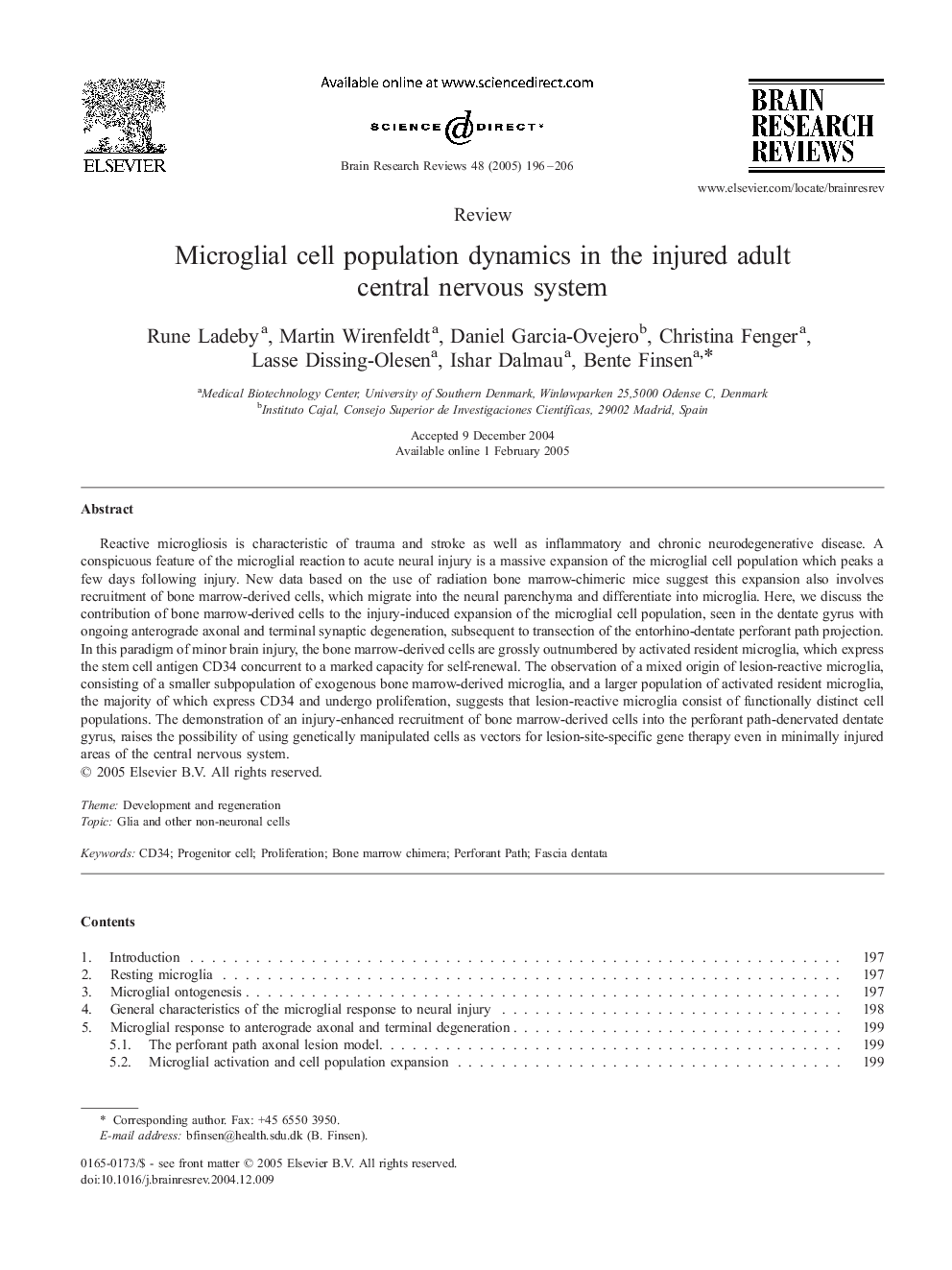| Article ID | Journal | Published Year | Pages | File Type |
|---|---|---|---|---|
| 9423155 | Brain Research Reviews | 2005 | 11 Pages |
Abstract
Reactive microgliosis is characteristic of trauma and stroke as well as inflammatory and chronic neurodegenerative disease. A conspicuous feature of the microglial reaction to acute neural injury is a massive expansion of the microglial cell population which peaks a few days following injury. New data based on the use of radiation bone marrow-chimeric mice suggest this expansion also involves recruitment of bone marrow-derived cells, which migrate into the neural parenchyma and differentiate into microglia. Here, we discuss the contribution of bone marrow-derived cells to the injury-induced expansion of the microglial cell population, seen in the dentate gyrus with ongoing anterograde axonal and terminal synaptic degeneration, subsequent to transection of the entorhino-dentate perforant path projection. In this paradigm of minor brain injury, the bone marrow-derived cells are grossly outnumbered by activated resident microglia, which express the stem cell antigen CD34 concurrent to a marked capacity for self-renewal. The observation of a mixed origin of lesion-reactive microglia, consisting of a smaller subpopulation of exogenous bone marrow-derived microglia, and a larger population of activated resident microglia, the majority of which express CD34 and undergo proliferation, suggests that lesion-reactive microglia consist of functionally distinct cell populations. The demonstration of an injury-enhanced recruitment of bone marrow-derived cells into the perforant path-denervated dentate gyrus, raises the possibility of using genetically manipulated cells as vectors for lesion-site-specific gene therapy even in minimally injured areas of the central nervous system.
Keywords
Related Topics
Life Sciences
Neuroscience
Neuroscience (General)
Authors
Rune Ladeby, Martin Wirenfeldt, Daniel Garcia-Ovejero, Christina Fenger, Lasse Dissing-Olesen, Ishar Dalmau, Bente Finsen,
